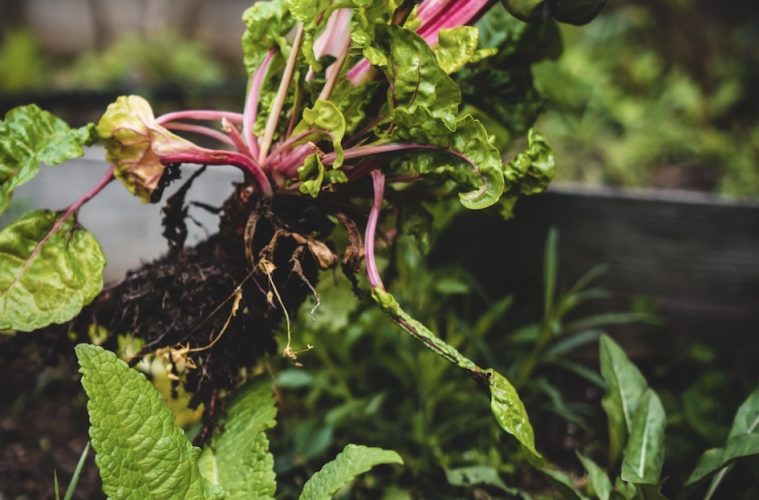Growing your own food is always an exciting experience. Unfortunately, it can also be quite stressful. The process of nurturing your tiny seedling into a mature, productive plant is a labour-intensive one, and no one wants all that effort to go to waste. Stay on top of these edible garden care essentials to ensure you get the most from your plants.
Watering
A sizeable proportion of the makeup of most fruits and vegetables is water, so it’s up to you to make sure they get it. Consistent and thorough watering is most important, especially immediately after planting, to encourage the roots to travel deeper into the soil.
Check the moisture levels of the soil regularly. Most vegetable gardens are watered a few times a week, depending on the plants chosen. Container gardens lose water faster and will need to be watered more often. On scorching summer days, the soil will dry out faster, and in winter the soil will retain more moisture – adjust your watering accordingly. Always water gently to avoid damaging new growth or clumping seeds together.
Consistency is key. Fruits that haven’t been watered in a while often crack and break off under the pressure when they get water again. Like any form of gardening, it’s about assessing the weather, the soil, and the needs of your plant to provide the right amount of water.
For larger vegetable gardens, it may be worth investing in a drip irrigation system or making one yourself by burying bottles with holes in the soil. Simple systems can be bought online, at your local nursery, or DIY’d in various ways. The water is delivered straight to the roots, saving water that would usually evaporate or sit on the leaves and cause damage.
Mulching
Mulching is incredibly underrated. It helps retain moisture in the soil, keeps the roots cool, stops weeds from sprouting, improves soil health – the list goes on. And, depending on what you have on hand, it’s usually free and easy to do. Any organic matter can be used as a mulch – dried leaves, straw, grass, and untreated bark. Simply add a layer of your chosen material on top of the soil, about as thick as the tip of your finger. Wait until the weather has picked up in spring before starting – the soil needs time to warm before mulching as it cools the roots. It’s easy to top up as needed throughout the season, especially if weed suppression is your main goal.
Fertilizing
If you’ve added a slow-release fertilizer to your soil mixture before planting, the pellets will gradually break down and release the nutrients into the soil. You may prefer to apply your own fertilizer, or you may notice some signs of nutrient deficiency in your plants that require attention. If that is the case, apply your homemade or store-bought fertilizer following the instructions exactly to avoid burning the roots of your plants or overloading them with certain nutrients. Remember, each of the macronutrients do different things. Some store-bought fertilizers are made specifically for fruit and vegetable plants, but always read the ingredients and instructions to know what you’re putting into your soil and your plants. Choose organic fertilizers over synthetic for better soil health and the health of your garden environment.
Weeding
There is a popular quote by Ella Wheeler Wilcox, “A weed is but an unloved flower.” However, when you need healthy, disease and pest-free plants to produce the best fruit possible, weeds are usually not welcome. Weeds grow quickly and establish deep roots, competing for water, light, and nutrients. Regular weeding can save you a significant headache later in the season, and is a safer option compared to herbicides as its use can affect your produce and may be dangerous to your health.
Maintenance
Along with watering, mulching, fertilizing, and weeding, you’ll have a few other tasks to keep your plants healthy.
Edible plants are vulnerable to changes in temperature. If you notice a chill, or are struggling in extreme heat, it’s likely your plants are struggling too. The same principle applies to extreme winds or heavy rain. Protect them from the harsh weather using a shade cloth, frost blanket, or whatever covers you have available.
Some edible plants need support, like trellises, stakes, or tepees to grow effectively. In packed beds, supports provide more space, light, and airflow by allowing the plants to grow upward away from crowded beds. Keep positioning in mind when placing supports – taller plants will cast a shadow that may deprive nearby plants of light.
Finally, as much as we see gardening as a ‘down and dirty’ activity, you still need to keep your edible garden clean. Remove any plant debris from the garden as soon as possible to prevent pests and diseases from moving in. Keep the plants themselves clean by removing damaged stalks or leaves and deadheading spent flowers. This ensures the plant’s energy will go toward the produce – not saving damaged or dying parts of the plant. While you’re cleaning, add your gardening tools to the list. Reusing tools that are harbouring bacteria or soil diseases will spread that problem to the rest of the plants in your garden.
Written by Madison Moulton


